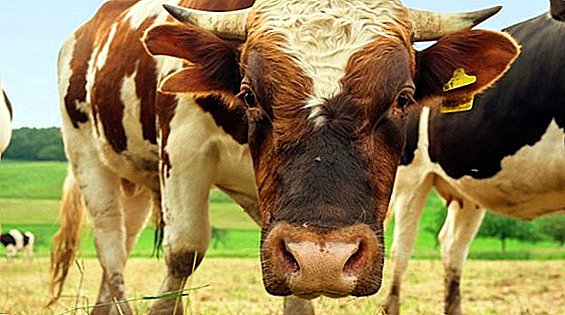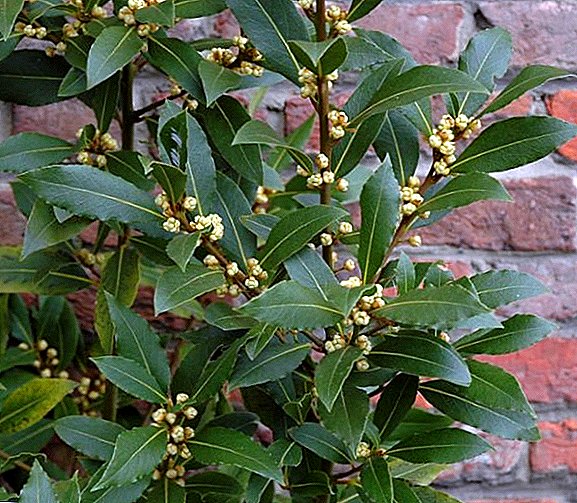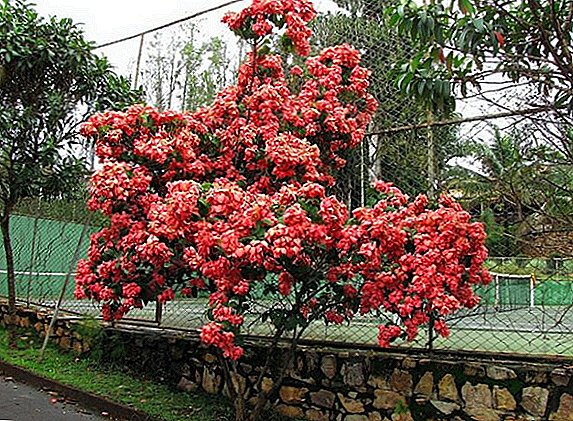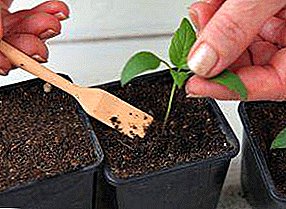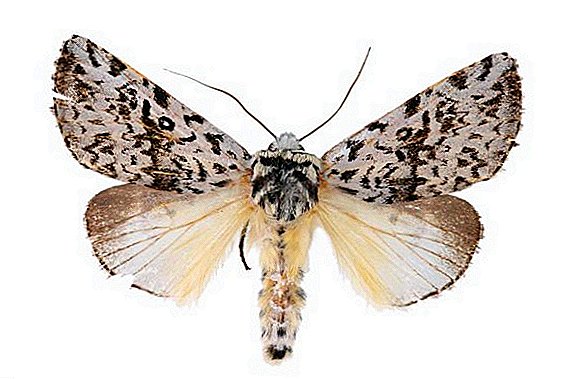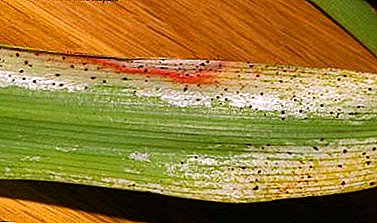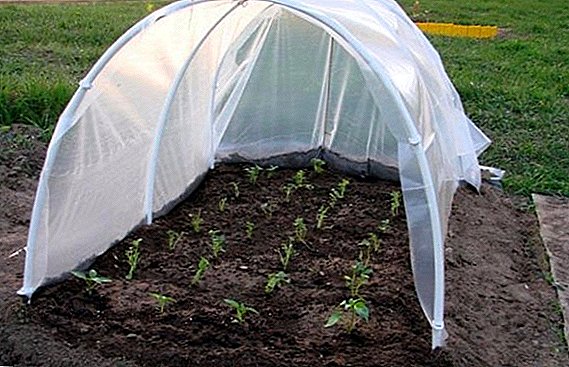 Growing cucumbers in a greenhouse from seeds, there is a risk of getting a lot of barren flowers. However, many gardeners resort to this method because it is the least time consuming compared to the seedling method.
Growing cucumbers in a greenhouse from seeds, there is a risk of getting a lot of barren flowers. However, many gardeners resort to this method because it is the least time consuming compared to the seedling method.
To get a rich harvest and minimize risks, it is important to adhere to certain recommendations, starting with the selection of seeds and their preparation.
Timing
Long before sowing seeds should decide when to plant cucumbers in the greenhouse. For comfortable growth of cucumbers, the soil should warm up to at least +12 ° C, and the ambient temperature should not be below +15 ° C. In a greenhouse, such conditions occur around the 20th of April, then you can begin to sow. 
Did you know? Cucumber belongs to the Pumpkin family, and its homeland is considered to be the foot of the Himalayas.
Top Grades
In the greenhouse, you can grow both varietal species of cucumbers, that is, bee-pollinated, and hybrid, or parthenocarpic, which are pollinated independently.
Of high-quality cucumbers, the most well-recommended for growing in closed ground are the varieties Domashny, Rossiysky, Regatta, Zarya, Moscow Hothouse and Relay.
It is possible to grow cucumbers not only in the greenhouse and open ground, but also by more non-standard methods: in buckets, plastic bottles, barrels, bags, on a windowsill or balcony, by hydroponics.
Among the hybrids of domestic breeding are popular varieties "Annie F1", "Parker F1", "Angel F1", "Gosha F1", "Blanca F1", "Burevestnik F1". From imported hybrid varieties, preference is given to the following: "Cristina F1", "Masha F1", "Marcella F1", "Pasamonte F1". 
Selection Criteria
When selecting seeds should be guided by the following criteria:
- First, you need to decide on the type of seed: varietal or hybrid. If you plan to collect seeds for sowing next season, then you need to choose varietal seeds. If in the foreground - a rich harvest and disease resistance, then the best choice would be hybrids. Growing hybrid cucumbers in a greenhouse is somewhat simpler, since it does not require the organization of pollination of the bushes.
- Next, you need to indicate for yourself the purpose of the harvest: conservation or fresh use. On packages with seeds, information is usually indicated, for which this variety is more suitable. Cucumbers for preservation are usually smaller and have no voids.
- An important criterion is resistance to diseases and pests.
- Many cucumbers, especially varietal, have a bitter taste. This criterion is decisive for many, so you should pay attention to the inscriptions on the packages. Hybrid varieties and some pollinated are labeled "genetically without bitterness."
Did you know? In our latitudes, cucumber with pimples is common, with small needles at the end. In the West, however, they prefer absolutely smooth varieties, and pimples are called cucumbers in the “Russian shirt”.
Soil preparation
Before planting cucumbers in a greenhouse, it is necessary to prepare the soil. When preparing the soil, first check its acidity. Since cucumbers are a crop that does not like sour soil, the acidity index should be no more than 6.5. In another case, it is required to add liming components to the soil. It is also necessary to fertilize the earth with compost and manure: cucumbers bear fruit better on organic soil.
In another case, it is required to add liming components to the soil. It is also necessary to fertilize the earth with compost and manure: cucumbers bear fruit better on organic soil.
Also on 1 square. m can make:
- 2 tsp. superphosphate;
- 2 tbsp. l wood ash;
- 2 kg of a special mixture for cucumbers.
Sowing rules
There are two methods of planting seeds in a greenhouse seeds: they can be sown dry or germinated. 
Dry
The dry method sows the seeds when an earlier planting is required, since the prepared seeds may rot in insufficiently heated soil. Sow the seeds flat in holes about 2 cm deep, leaving a distance of between 15 and 20 cm. Inter-row spacing should be 35-40 cm. If the density was too high when sowing, the seedlings are thinned out when 2-3 leaves appear.
Germinated
Germinated seeds should be planted barely spiked. If the sprout reaches more than 0.5 cm before sowing, the plant will be weak. For germination, seeds are soaked, wrapped in cloth, in room temperature water.  Water should not be too much, so as not to impede the flow of air to the seeds. As soon as the seeds are full, they are placed in a fridge for two days for hardening. Then they should be immediately sown in the soil as described above.
Water should not be too much, so as not to impede the flow of air to the seeds. As soon as the seeds are full, they are placed in a fridge for two days for hardening. Then they should be immediately sown in the soil as described above.
Seedling care
At first, it is very important to get rid of weeds in time so that they do not take nutrients from the soil. Therefore, at this stage, the main thing is to timely loosen the soil. But this should be done very carefully so as not to damage the delicate shoots and roots of cucumbers.
Water the seedlings should be about once a week, always with warm water, otherwise the death of the roots may occur. 
Important! It is strictly forbidden to irrigate with a hose in order to avoid damage to the root system.
After the appearance of two true leaves, the seedlings are fed with nitroammophoska at the rate of 3 tsp. 3 liters of water. At the seedling stage it is imperative to carry out the pinching, this contributes to the development of a strong root system.
Features care for adult bushes
Grown up seedlings must be properly formed in the bushes by tying to the trellis. Shrub should be formed in one stem, removing side shoots. When the stem reaches the top of the trellis, the tops should be pinched. It is necessary to ensure that the soil always remains wet, but waterlogging should not be allowed. On average, adult bushes are watered 2-3 times a week. Organic fertilizers are used as fertilizer: mullein, humus, compost, chicken manure. Up to 200 g of organics are added to a bucket of water. The solution should ferment for two days, then 50 g of superphosphate and 200 g of ash are added to it. During the season should be no more than 5 dressings.
Important! Over-saturation with fertilizers has a negative effect on productivity: the green mass begins to develop intensively, and budding is delayed.These tips, how to plant cucumbers in a greenhouse, will help to quickly get the crop of these vegetables to your table.



